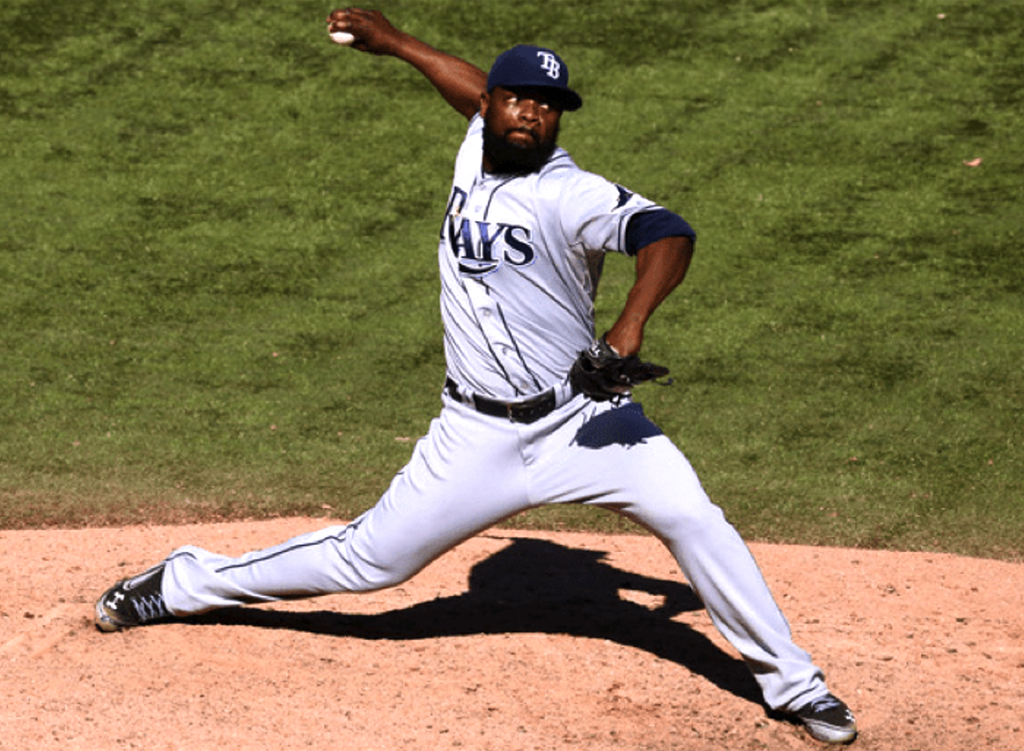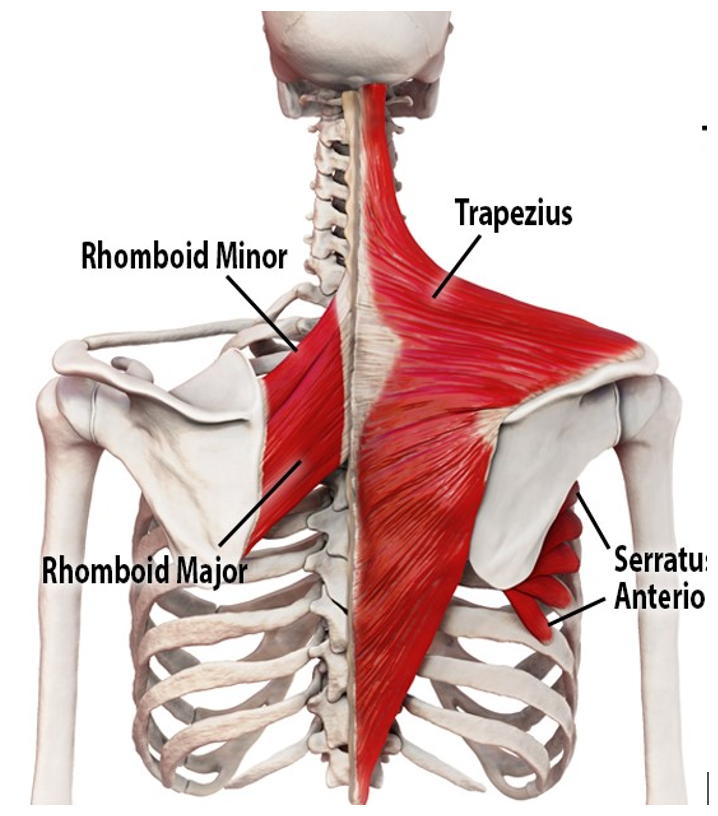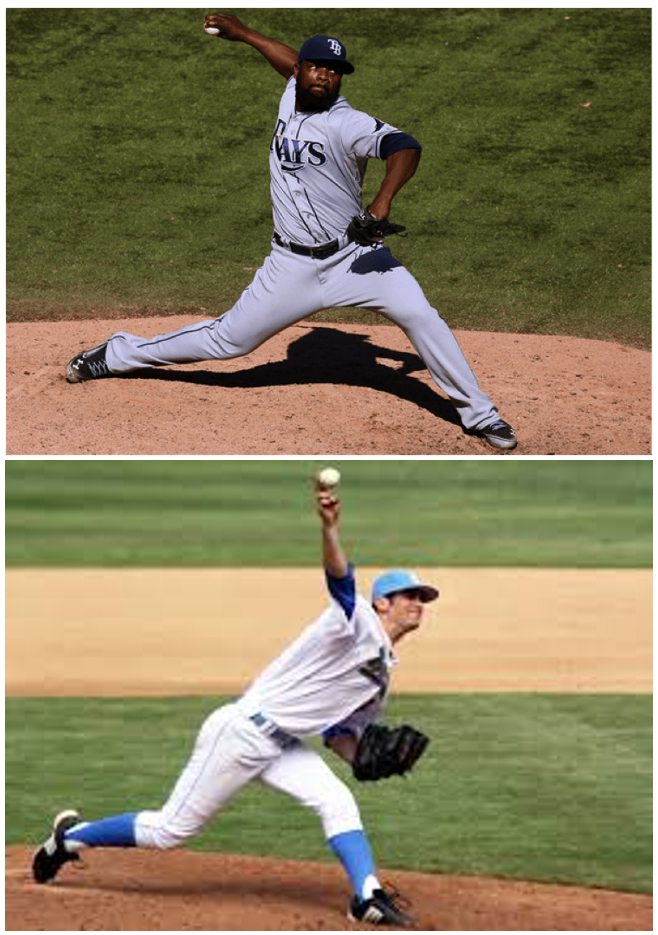
What is Scapular Stability?
The Scapula (shoulder blade) attaches to your ribcage via two main muscles, the serratus anterior and the trapezius. These muscles (with help from the Rhomboids), pull in different directions to help keep your shoulder blade stable while your arm moves and accepts force. They are otherwise known as your “scapula stabilizers”. Why is it Important?

Why is it Important?
Scapular stability refers to the ability of these muscles to contract and help the scapula to create and maintain a stable base for the shoulder while the arm moves through any motion, but for this article during upward rotation (going overhead) or scap loading. Scapular stability is key when going both overhead as well as scap loading.

Scap stability is also crucial for injury prevention such as labral and cuff tears and more distal when talking about UCL injuries as well.
It’s important to point out, that even if you have a completely healthy rotator cuff, even one with great mobility, you may still experience pain in the shoulder, upper back, and neck due to inadequate strength in those muscles that stabilize the scapula. If the scapula is not sitting securely on the thorax (ribcage), then the individual strength of the cuff muscles doesn’t matter.
As stated before, the scapula must be in the right position and provide a strong stable base of support for the rotator cuff muscles to function properly. If not, it’s like trying to shoot a cannon from a canoe. For this reason, we need to focus on exercises that train both the muscles of the rotator cuff and scapular stabilizers AT THE SAME TIME. Training one will simply not be as effective as training both.
It’s about both strengthening the muscles of the rotator cuff, the scapular stabilizers, tissue quality. Putting it all together involves:
-
-
- Rotator Cuff – Strength / Motor Control
- Tissue Quality – Tight Internal Rotators
- Weak Scapular Retractors and Protractors
- Firing Time of the Cuff / Putting it All Together
-
Let’s briefly look at each.
A. Rotator Cuff – Strength / Motor Control
The importance here is that we ensure that each of the individual rotator cuff muscles are strong enough independently so that they can help contribute to overall shoulder health. Some are responsible for external rotation and some for internal rotation. Let’s take a look.
The External Rotators (Infraspinatus, Teres Minor) – What they do? The Infraspinatus and Teres Minor make up the posterior cuff, which enables them to produce external rotation, which in-turn (assuming there is no tightness in the int. rotators such as the lat and teres major), allows you as a thrower to get your arm into external rotation or the “lay back” position.
End Range Liftoffs
The Internal Rotator (Subscapularis) – What does it do? The Subscap is the largest muscle of the rotator cuff allowing it the most internal rotation force at 90 degrees. During the throwing motion the subscapularis helps depress the humeral head to prevent anterior migration of the humerus, but it also contributes to the act of throwing by providing some internal rotation power (pronation) for when your arm starts to rotate at ball release.
Prone Internal Holds
B. Tissue Quality – Tight Internal Rotators
Tight Internal rotators (lats, pec minor, levator scap, upper traps) – While our discussion today is on the main scapular stabilizers and muscles of the cuff, I would be remiss not to mention some other internal rotators that when tight, pull the scapula out of position causing the big 3 to become long and weak, allowing for a less stable scap. Let’s take a look.
The latissimus dorsi This muscle is primarily responsible for scapular depression, meaning it pulls the inferior angle of the scapula (shoulder blade) downwards and towards the spine, contributing to movements like shoulder adduction and extension; essentially pulling the shoulder blade down and back.
The pectoralis minor muscle (pec minor) is primarily responsible for protracting (pulling forward) and depressing the scapula (shoulder blade), essentially moving it downward and anteriorly towards the chest wall, contributing to shoulder joint stability and mobility.
The levator scapulae muscle is primarily responsible for elevating the scapula (shoulder blade), meaning it lifts the shoulder blade upwards, and also contributes to downward rotation of the scapula, tilting the glenoid cavity inferiorly; essentially positioning the shoulder joint by rotating the scapula slightly downward when contracting.
We love TRX Deep Squat Breathing, mostly due to the fact that it hits all three of these key internal rotators with one exercise.
TRX Deep Squat Breathing
Click here for Part 2, where we cover c) Main Stabilizers Weak Scapular Retractors and Protractors, and d) Firing Time of the Cuff / Putting it All Together.
See ya’ in the gym
By Nunzio Signore (BA, CSCS, CPT, NASM, FMS)
If you’d like to be placed on our email list please enter your email address below!
